The granite at Girraween is just one small section of a great mass of rock - the Stanthorpe Granite - which underlies most of the Granite Belt of Queensland. This is itself only part of an even larger complex of granitic rocks of different ages - the New England Batholith - which stretches from just south of Warwick (in Queensland) down to Armidale (in New South Wales); a distance of just over 250 kilometres (160 miles).
|
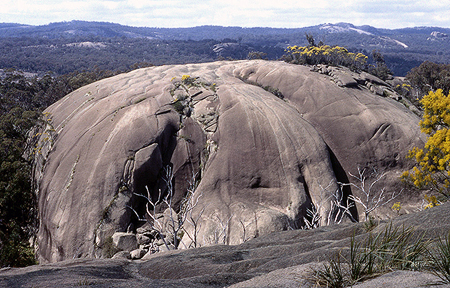
The domes of Twin Peaks are just a small section of the Stanthorpe Granite.
|
The Stanthorpe Granite was originally a molten mass of magma that rose up and pushed into the older rocks surrounding it, about 240 million years ago (Triassic period). The magma probably resulted from heat generated in the crust when the eastern side of the continent was being compressed by two tectonic plates coming together.
|
As the magma rose, it melted the surrounding rock and assimilated fragments of it into its mass. Some of these fragments (xenoliths) can be seen today, captured within the granite.
Some xenotliths are made of a softer rock than the surrounding granite. When exposed to weathering, these erode more quickly and become recessed. Xenoliths made of a harder material that is more resistant to erosion may protrude from the granite surface.
|
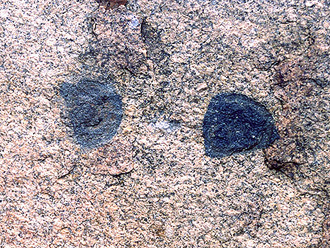
Xenoliths in granite.
|
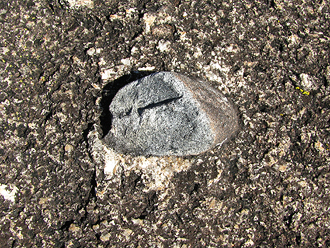
This protruding xenolith is made of a harder and finer-grained material than the surrounding granite.
|
While it was still deep below the Earth's surface, the magma cooled very slowly, allowing its minerals to solidify and grow into large crystals. The crystals interlocked as they grew, creating the coarse-textured granite. These crystals are so big that they can easily be seen in the rocks.
Granite is an aggregate of silicate minerals. The five main minerals in the Stanthorpe Granite are:
|
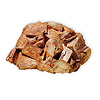
|
Potassium feldspar (50%)
a chalky, light brown-pink mineral with fine straight parallel cracks running through it; |
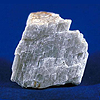
|
Plagioclase feldspar (10%)
a chalky, white mineral; |
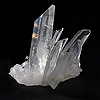
|
Quartz (30%)
a very hard, glassy light grey or clear and colourless mineral; |
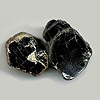
|
Biotite mica (7%)
a shiny, black, flaky mineral that sparkles in the sunlight; and |
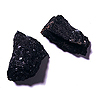
|
Hornblende (3%)
a shiny, black mineral. |
|
Together, as granite, the minerals look like this:
|
Before all of the magma had completely solidified, the final liquid dregs were squeezed along any planes of weakness within the hardening mass. These dregs cooled relatively quickly, forming a rock called "aplite". Aplite is made up of feldspar and quartz, with sometimes very minor traces of biotite mica. It is a light pink in colour and has smaller crystals and a different texture to the surrounding granite. The aplite slices occur as "dykes", which are usually quite easy to spot as they look like straight lines running through the granite. Examples of dykes can be found at Underground Creek, the Pyramids, Granite Arch and along the Mt Norman track.
|
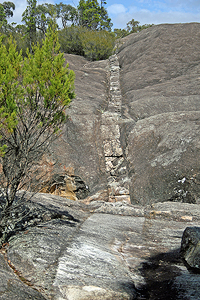
An aplite dyke behind
Underground Creek. |
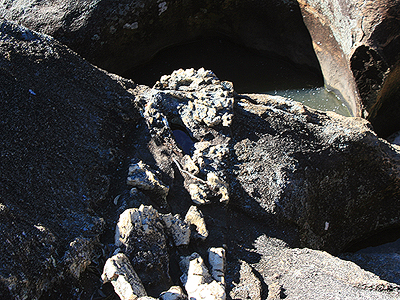
Aplite has a different texture to the surrounding granite.
|
|
Some time after the formation the Stanthorpe Granite, further geological activity caused the land to rise - forming the tableland and mountains of the New England Fold Belt.
Erosion has gradually removed the vast quantities of older rock - a layer maybe three or more kilometres thick - that was once above the Stanthorpe Granite. It is thought that the granite was eventually exposed to the open sky by about 190 million years ago (Jurassic period). Since then, a considerable thickness of the granite itself has also been removed by weathering from above the present land surface. Vast volumes of sand, derived from the eroded granite, have been shed into surrounding areas.
The creation of Girraween's landscape hasn't stopped. Wind, water, ice and plants continue to sculpt the granite, as they will for many more millions of years to come.
Next... The Sculptured Landscape
|
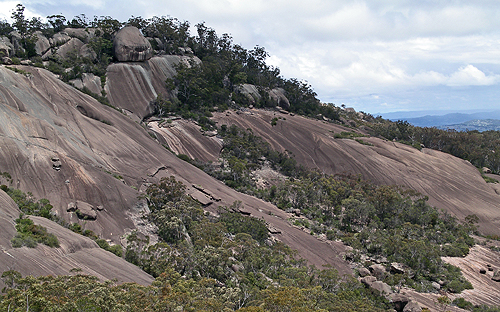
The granite slopes of Mt Norman.
|

